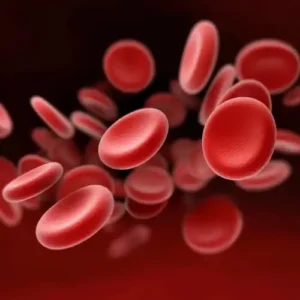What’s All the Fuss About Anaphylaxis?
You’ve probably heard of allergies, but anaphylaxis? That’s the heavyweight champion of allergic reactions. It’s not your run-of-the-mill sneeze fest or itchy eyes situation. Nope, anaphylaxis is a severe, potentially life-threatening reaction that can come on faster than you can say “antihistamine.”
Now imagine your immune system in your body like this overzealous bouncer who’s very, very, very enthusiastic about working at that club. It’s really good at keeping the bad guys out the majority of the time. But occasionally, it sees something perfectly benign as a troublemaker and it goes on the offensive. And that, in a nutshell, is anaphylaxis.
The Anaphylaxis Rollercoaster: A Personal Tale
Let me tell you about my friend Sarah’s first brush with anaphylaxis. Picture this: she’s at a fancy restaurant, celebrating her promotion. The waiter brings out a delicious-looking salad, and Sarah digs in. But within minutes, her world turns upside down.
“It felt like my body was betraying me,” she told me later. “One minute I’m savouring my meal, the next I’m struggling to breathe.”
Sarah’s lips started swelling up like she’d gone ten rounds with a heavyweight boxer. Her skin erupted in hives faster than popcorn in a microwave. And that’s when panic set in.
Luckily, a quick-thinking patron recognised the signs and called for help. Sarah spent the night in the hospital instead of celebrating her promotion.
Now, Sarah’s always prepared. She carries her auto-injector like it’s her smartphone – never leaves home without it. She’s become a pro at reading food labels and isn’t shy about grilling waiters on ingredients.
“It’s not just about avoiding triggers,” Sarah says. “It’s about being ready for anything. Anaphylaxis doesn’t play by the rules, so you’ve got to be one step ahead.”
Identifying the Signs: It’s Not Just a Bad Day
How do you show them who’s boss when you’re dealing with anaphylaxis and not just having an incredibly bad afternoon? Well, of course, your body’s most certainly going to tell you:
- Part of this package may be an itchy, red, or rashy skin section.
- A section of your skin is suddenly tagged with redness as the rash appears.
- You may very well feel like you have just run a marathon race, and you are still just sitting there.
- It’s hard to breathe when your throat goes on strike and closes up shop.
- Your stomach may rebel with pain or nausea even vomiting.
- In more severe episodes, there might be a sensation of impending doom or a loss of consciousness.
When Anaphylaxis Strikes: Don’t Just Stand There!
If they suspect someone has anaphylaxis, it’s time to spring into action. It’s not a wait-and-see affair. Here’s what needs to be done:
- If there is an auto-injector device with adrenaline, use it immediately, without any further delay.
- Call 999. Even if the auto-injector is administered, the person with anaphylaxis needs to be availed of medical professionals as soon as possible.
- If you can identify the trigger, such as the sneaky bee sting, sensitively take it out.
- Elevate their legs while they are lying down to deepen rest. Allow them to sit if they find it hard to breathe.
- If it worsens, and the person becomes unconscious, look, listen, and feel for breathing and place the victim in the recovery position.
Remember, anaphylaxis is a medical emergency. It’s better to be overly cautious than to delay treatment.
The Usual Suspects: What Triggers Anaphylaxis?
Anaphylaxis doesn’t just come on for no apparent reason—it typically has a trigger. The most common culprits include:
- Insect stings: Wasps and bees are the common culprits.
- Foods: Peanuts will be the frontrunners, but tree nuts, milk, fish, shellfish, and eggs are not to be taken lightly as well.
- Medicines: A small number of antibiotics and painkillers can also be offenders in some people.
- Latex: This one, however, is quite tricky, especially for health care workers, and others who expose themselves to latex gloves quite often.
Sometimes, no matter how closely you look at it, the inciting factor remains a mystery. That’s idiopathic anaphylaxis. Idiopathic—an idiopathic seventeen-dollar word for “We don’t know what caused it, but it definitely happened.”
How Not to Have a Replay
If you have ever had one of these reactions, you don’t want to have one again. Here’s how to avoid a repeat:
- Consult an allergy specialist. They can help you discover what your triggers are and give you a game plan.
- Always have your adrenaline auto-injector with you, right there. This should be your second nature, like your phone or your keys.
- Know your triggers and do your best to avoid them. This may mean reading food labels like a ninja or asking about ingredients when you go out.
- Teach your friend and family. The more people who know what to do in an emergency, the better.
Living with the Risk of Anaphylaxis: Managing Severe Allergies
Having an anaphylactic history can be scary, but it should not take over your life. Just take the needed precautions and learn all you can about how to live a life fully with even the most severe allergies. Prepare yourself and pay attention to the triggers.
Remember, you’re not alone in this; there are many others out there who are managing with severe allergies and the risk of anaphylaxis, so there are lots of resources for supporting you through this challenge.
So keep your chin up with your auto-injector close and your sense of humour intact. After all, life’s too short to let allergies have the last laugh!
Photo “Anaphylaxis: Knowing and Dealing with Serious Allergic Reactions” by Anthony Cunningham for Zoom Health
Zoom Health is a leading UK supplier of Home Health Tests and Earplugs





